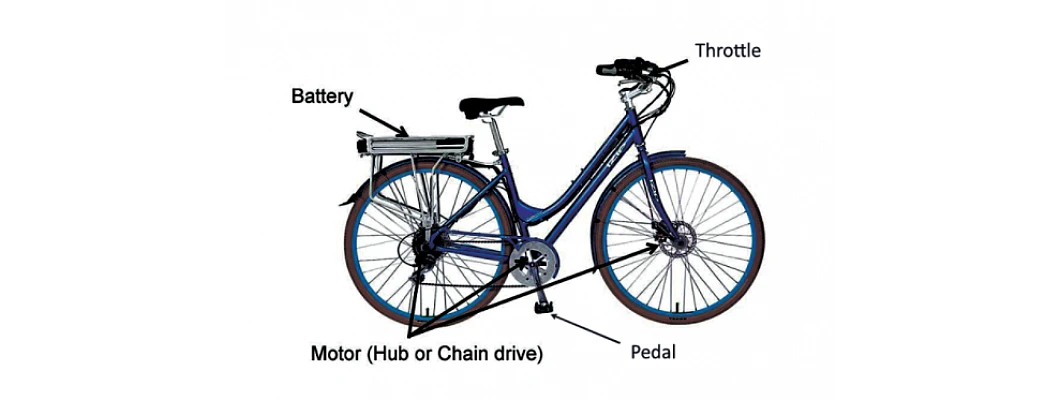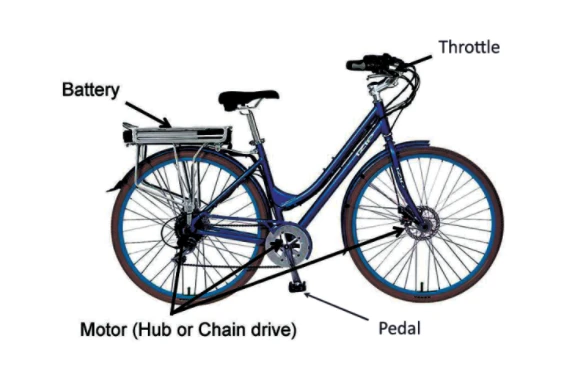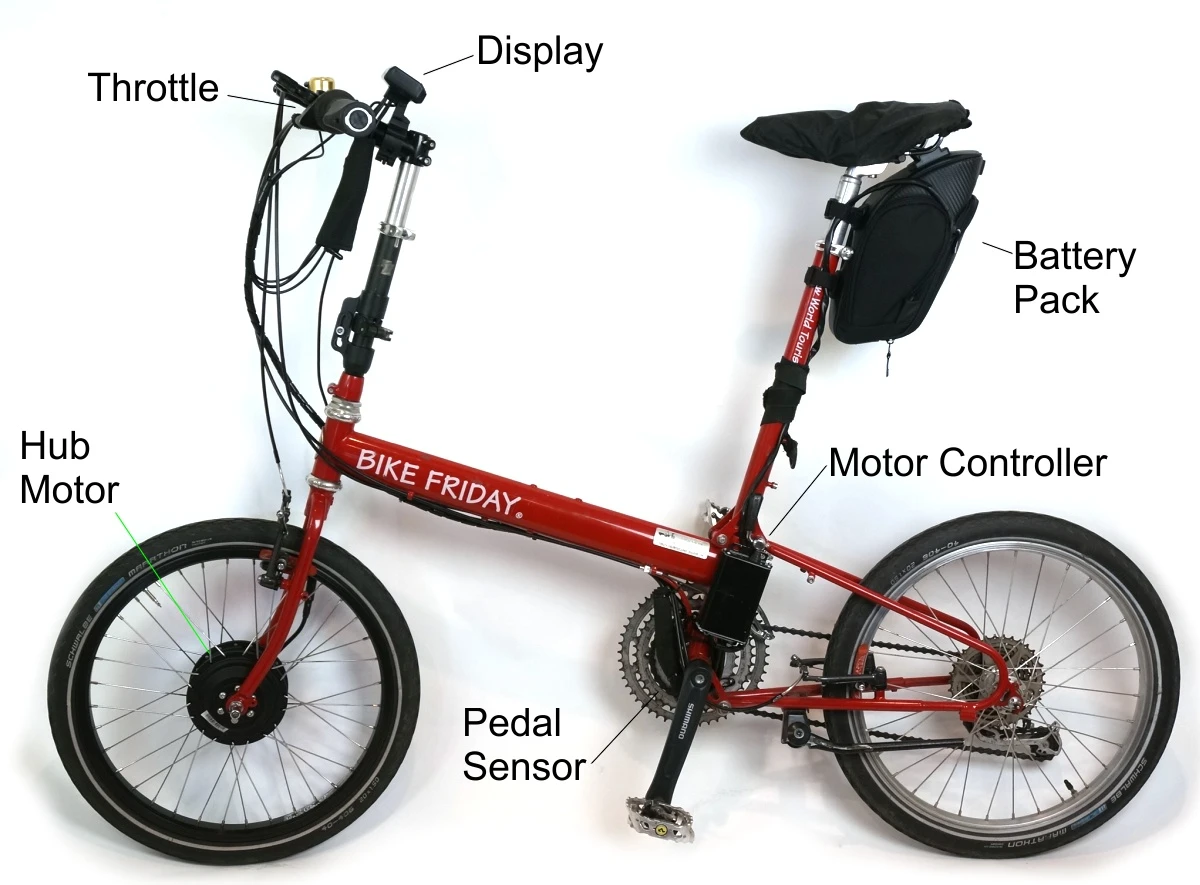06 Oct


0 Comment(s)
1368 View(s)
Hello,
In this article, we are going to give you a brief introduction to the e-bike technology.
With the technological advancements in the modern day world, electric bikes have become a necessity rather than a luxury. It is the biggest step taken by countries towards the green initiative in the past decade.
An E-bike is a faster version of a regular bicycle. It travels in the range of 20-50 km/hr. It also reduces the travel time via bicycles.
What is an E-bike?
An E-bike is a power-assisted bicycle which is one of the fastest adapting technologies in the two-wheeler industry right now. It uses an electric motor integrated along with a normal bicycle to aid in driving a bicycle.
E-bikes are classified into two main types: Throttle based and pedal based. The motor provides power whenever the throttle or the pedal is pressed. The pedal based e-bike is the most popular preference as the motor provides power when you pedal so it feels very similar to riding a bicycle. In throttle based E-bikes, the motors provide power when the throttle is twisted. So throttle based E-bikes feel more like a motorcycle and that is the reason they are not that popular.
E-bikes are available in many different types: from commercial bikes to mountain bikes.
There are a lot of regulations with which e-bike manufacturers have to comply. This makes it a bit difficult for manufacturers to develop the e-bikes to their full potential. The power output is one of the things which is governed by regulations and so the typical power output of pedal based e-bikes is around 250 watts.
Bikes with the throttle based system have different regulations than that of the pedal based e-bikes. This limits their power to around 200 watts and their speed to about 25 km/hr.
The components of an E-bike include the pedal sensor or throttle, the hub motor which is either connected to the front or the rear wheel, the motor controller and the battery pack. These components are absolutely essential for building an E-bike. There are also other optional components like E-brakes, PAS etc. Each of these components perform a specific function and altogether make up an electric bicycle.
Comparison of E-bikes with regular bikes
E-bikes have much more merits over the conventional bikes.
- E-bikes run on electricity whereas normal bikes run on liquid fuel. So electric bikes have zero emissions and thus do not pollute the environment. AS they run on electricity and a brushless motor, electric bikes also do not generate any noise during the ride whereas the engine in a normal bike generates both harmful emissions and noise.
- If you have a pedal based E-bikes then pedaling is good for your health. So having an E-bike is healthier than having a normal bike.
- You can ride the E-bike with speeds upto 25 km/hr. For a bicycle this is more than enough to travel in the city. This speed limit has been set by the government due to safety reasons.
- A battery is an essential component of the E-bike. This battery is made from Lithium-ion. Depending on the size of the battery and the power of the charger, the battery can be charged between 3 to 8 hours. Even if the battery in an E-bike dies, you can still pedal the bike. This is not the case in fueled bikes. They need to be refueled otherwise they will not run.
- E-bikes are heavier than a regular bikes by around 25kgs. The main weight is due to the motors and the battery pack.
- E-bikes do not require more maintenance than a regular bike.
- You do not require a license to ride an E-bike. But you have to follow the motor rules set by the government like you are riding a regular bike. If your bike is more powerful then you might need to register for a license.
- E-bikes run on electricity whereas normal bikes run on liquid fuel. So electric bikes have zero emissions and thus do not pollute the environment. AS they run on electricity and a brushless motor, electric bikes also do not generate any noise during the ride whereas the engine in a normal bike generates both harmful emissions and noise.
- If you have a pedal based E-bikes then pedaling is good for your health. So having an E-bike is healthier than having a normal bike.
- You can ride the E-bike with speeds upto 25 km/hr. For a bicycle this is more than enough to travel in the city. This speed limit has been set by the government due to safety reasons.
- A battery is an essential component of the E-bike. This battery is made from Lithium-ion. Depending on the size of the battery and the power of the charger, the battery can be charged between 3 to 8 hours. Even if the battery in an E-bike dies, you can still pedal the bike. This is not the case in fueled bikes. They need to be refueled otherwise they will not run.
- E-bikes are heavier than a regular bikes by around 25kgs. The main weight is due to the motors and the battery pack.
- E-bikes do not require more maintenance than a regular bike.
- You do not require a license to ride an E-bike. But you have to follow the motor rules set by the government like you are riding a regular bike. If your bike is more powerful then you might need to register for a license.
- E-bikes run on electricity whereas normal bikes run on liquid fuel. So electric bikes have zero emissions and thus do not pollute the environment. AS they run on electricity and a brushless motor, electric bikes also do not generate any noise during the ride whereas the engine in a normal bike generates both harmful emissions and noise.
- If you have a pedal based E-bikes then pedaling is good for your health. So having an E-bike is healthier than having a normal bike.
- You can ride the E-bike with speeds upto 25 km/hr. For a bicycle this is more than enough to travel in the city. This speed limit has been set by the government due to safety reasons.
- A battery is an essential component of the E-bike. This battery is made from Lithium-ion. Depending on the size of the battery and the power of the charger, the battery can be charged between 3 to 8 hours. Even if the battery in an E-bike dies, you can still pedal the bike. This is not the case in fueled bikes. They need to be refueled otherwise they will not run.
- E-bikes are heavier than a regular bikes by around 25kgs. The main weight is due to the motors and the battery pack.
- E-bikes do not require more maintenance than a regular bike.
- You do not require a license to ride an E-bike. But you have to follow the motor rules set by the government like you are riding a regular bike. If your bike is more powerful then you might need to register for a license.
- A battery is an essential component of the E-bike. This battery is made from Lithium-ion. Depending on the size of the battery and the power of the charger, the battery can be charged between 3 to 8 hours. Even if the battery in an E-bike dies, you can still pedal the bike. This is not the case in fueled bikes. They need to be refueled otherwise they will not run.
- E-bikes are heavier than a regular bikes by around 25kgs. The main weight is due to the motors and the battery pack.
- E-bikes do not require more maintenance than a regular bike.
- You do not require a license to ride an E-bike. But you have to follow the motor rules set by the government like you are riding a regular bike. If your bike is more powerful then you might need to register for a license.
- E-bikes do not require more maintenance than a regular bike.
- You do not require a license to ride an E-bike. But you have to follow the motor rules set by the government like you are riding a regular bike. If your bike is more powerful then you might need to register for a license.
I hope this article gives you a basic understanding of how E-bikes work. I hope you liked it. Thank you.




Leave a Comment